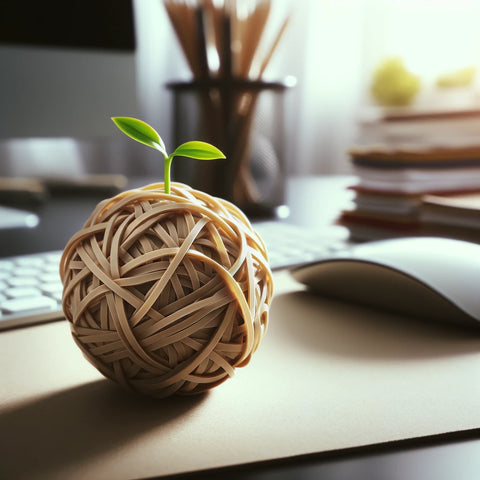Rubber, a material deeply ingrained in human history, finds itself at the crossroads of innovation and environmental concerns. This elastic marvel, stemming from the humble sap of rubber trees, has shaped industries yet seldom gets recognized for its eco-potential.
From Ancient Balls to Modern Tires: The History of Rubber
Rubber's journey begins with the ancient Mesoamericans, notably the Mayans and Aztecs, who used it for waterproofing and making balls for games. The method of extracting rubber involves 'tapping' the rubber tree, a process that has evolved yet remains fundamentally gentle, ensuring the tree's health and longevity.
Tapping into Nature's Bounty: The Art of Rubber Collection
The technique of rubber tapping requires precision. By making careful incisions on the tree’s bark, the milky latex sap is collected in cups. A skilled tapper ensures that the tree, which can be tapped for up to 30 years, sustains minimal damage, balancing productivity with ecological responsibility.
The Life and Times of a Rubber Tree
Rubber trees, native to the Amazon rainforest and now predominantly cultivated in Southeast Asia, Africa, and South America, can grow up to 100 feet tall. They start yielding latex at about 5-7 years old. Interestingly, the latex flow follows a daily rhythm, peaking in the early morning, a phenomenon unique to these trees.
Rubber's Environmental Paradox
The question of rubber's eco-friendliness is complex. While the tapping process is sustainable, broader issues like deforestation and plantation-related biodiversity loss cast a shadow over its green status. However, when compared to synthetic alternatives, natural rubber, being biodegradable and having a lower carbon footprint, has undeniable environmental advantages.
Chemical Concerns in Rubber
The potential for rubber to leach chemicals is a significant consideration, particularly with synthetic rubber varieties. The extent of leaching depends on factors like the type of rubber, processing chemicals, product usage, and age. This underscores the importance of strict safety standards, especially for rubber products in contact with food, water, or skin.
The Rubber Industry Today
The automotive industry, needing rubber primarily for tires, is its largest consumer. This demand brings to light the environmental implications of rubber production, from land use to waste management.
Rubber vs. Silicone: A Functional Comparison
In baby products, rubber and silicone serve distinct purposes. Rubber's natural origin and biodegradability are its strengths, while silicone, being hypoallergenic and heat-resistant, is favored in applications where these properties are crucial.
The Unique Aroma of Rubber
The characteristic smell of rubber is due to the VOCs released during its manufacturing. These compounds are not typically harmful but are unmistakable markers of rubber products.
Rubber Harvesting: Yield and Sustainability
A single rubber tree can yield about 19 pounds (8.5 kilograms) of rubber annually. Over its productive lifespan of approximately 30 years, a tree can produce up to 570 pounds (260 kilograms) of rubber, making it a valuable long-term resource.
Concluding Reflections on Rubber's Eco-Worthiness
Rubber's eco-friendly potential lies in how it's harvested and processed. Sustainable practices can elevate its status as a green product, balancing its indispensability in modern life with a commitment to environmental stewardship.
In essence, rubber's story is one of natural abundance, human necessity, and ecological mindfulness. Its future as an eco-friendly resource hinges on our collective efforts to harmonize its extraction and use with the principles of sustainability.


